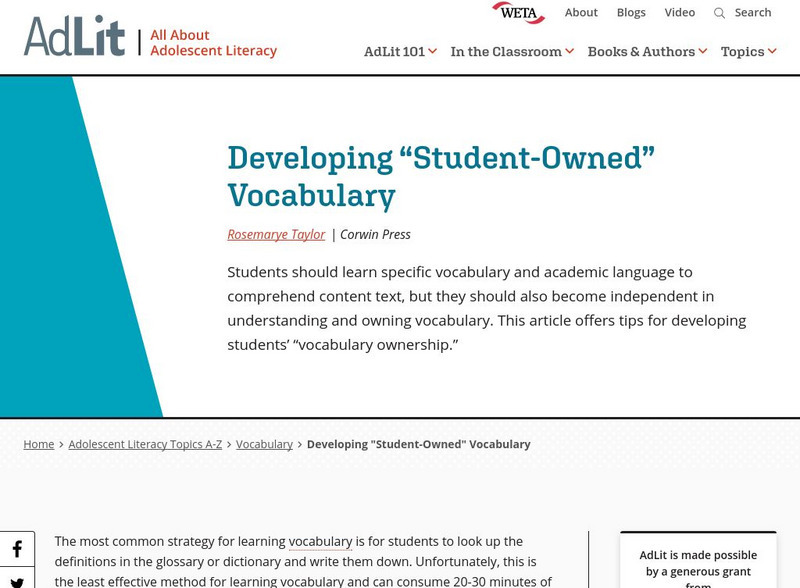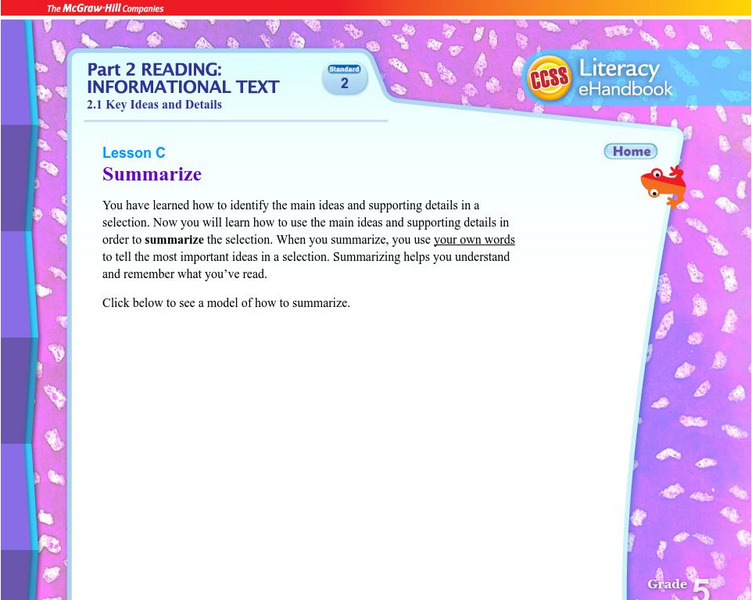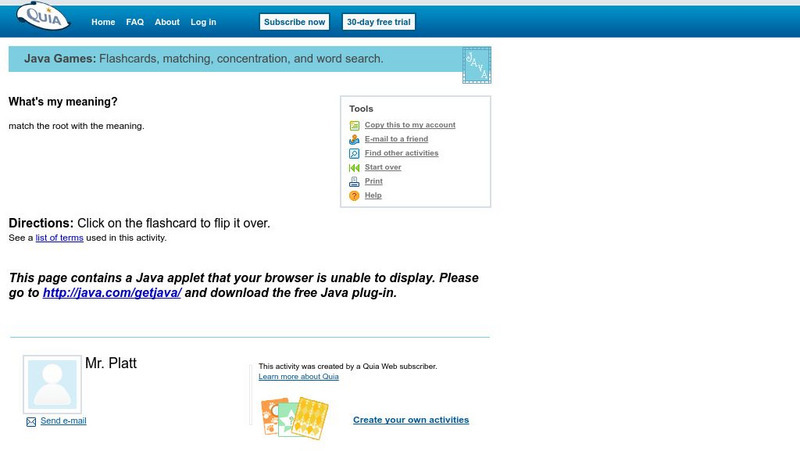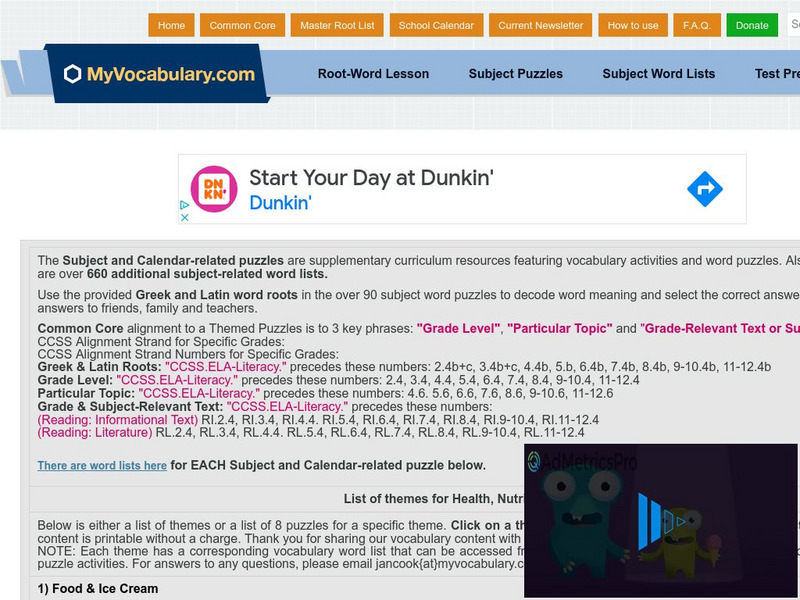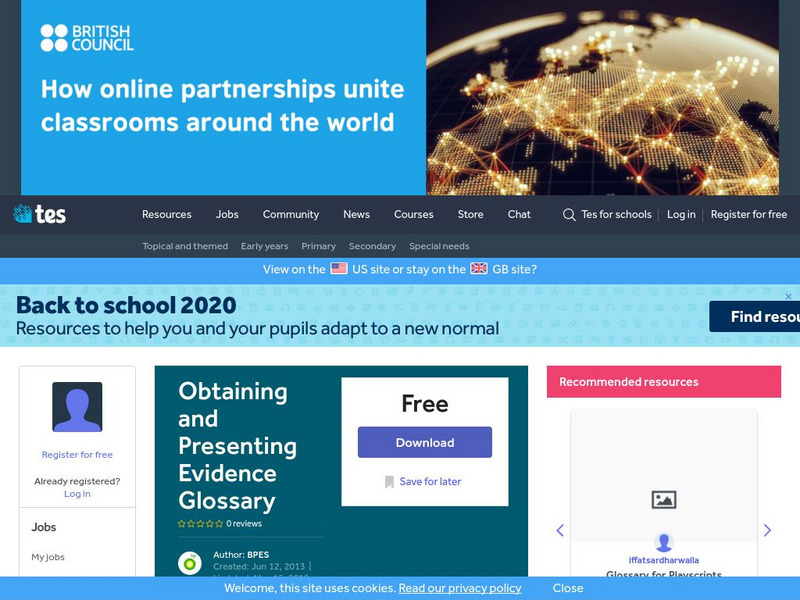University of South Florida
Fcat Reading Grade 4: Teaching Strategies
This is a great resource that concentrates strategies and student activities in one place in an easy to use format, and can be navigated easily. Find great examples of probable passage, selective underlining, and semantic feature...
University of South Florida
Fcat Express: Cause and Effect
Site provides extensive assistance in preparing 4th grade students for Florida Comprehensive Assessment Test. This section helps students identify cause and effect in literature.
University of Houston
University of Houston: Extra! Extra! What's the Big Idea?!
Get the feel of running a newspaper by selecting articles and pictures. If you are interested in checking out real newspapers, there is a clickable list of online newspapers for younger readers.
Reading Rockets
Reading Rockets: Reading Topics a to Z: Scientific Language in Primary Grades
Research on the importance of teaching scientific language usage, ideas for utilizing scientific language, and rubrics for assessing student use of scientific language in grade schools.
Texas Education Agency
Texas Gateway: Understand New Vocabulary Within Context (English 6 Reading)
You will learn how to use context (e.g., cause and effect or compare and contrast organizational text structures) to determine or clarify the meaning of unfamiliar or multiple-meaning words.
Texas Education Agency
Texas Gateway: Synthesize Ideas in Informational/expository Texts
[Accessible by TX Educators. Free Registration/Login Required] Learn how to synthesize and make logical connections between ideas within a text and across two or three texts representing similar or different genres (including literary...
CommonLit
Common Lit: Where Did I Come From
CommonLit.org is a wonderful resource to use in a Language Arts classroom. Each story or article is accompanied by guided reading questions, assessment questions, and discussion questions. In addition, students can click on words to see...
Texas Education Agency
Texas Gateway: Formal Writing Across the Content Areas
This resource explores instructional practices for incorporating formal writing into English language arts, mathematics, science, and social studies instruction. CCSS.ELA-Literacy.WHST.6-8.1.d
US Department of Education
Literacy Information and Communication System (Lincs): Signal Words
This resource page provides twelve long lists of signal words and what they mean. Covers signal words for continuation, change of direction, sequence, time, illustration, emphasis, cause of condition or result, spatial,...
AdLit
Ad lit.org: Developing "Student Owned" Vocabulary
Students should learn specific vocabulary and academic language to comprehend content text, but they should also become independent in understanding and owning vocabulary. This article offers tips for developing students' "vocabulary...
Writing Fix
Writing Fix: Details and Vocabulary: Using Content Based Vocabulary
In this lesson plan, students will write a descriptive paragraph regarding an animal and its habitat, or a character in a particular setting. Great cross-curricular usage of vocabulary.
Writing Fix
Writing Fix: Noun Inspired Animal Reports
In this lesson students will complete a report regarding an animal for science class. Vocabulary, nouns and verbs can be incorporated cross-curricularly.
Writing Fix
Writing Fix: Character Credo Poems
Build your student's vocabulary, word choice and voice by asking them to write from the perspective of a particular character. Lesson plan incorporates the R.A.F.T.S. strategy: role, audience, format, topic and strong verb.
Curated OER
Mc Graw Hill: Part 2 Reading: Informational Text: Summarize
Learn how to summarize a section of a text with this site.
ReadWriteThink
Read Write Think: Using Narrative for Expository Text
Lesson in which students read various narrative texts which provide a context for them to learn content-area topics. Narratives allow the students to begin to understand expository texts.
Quia
Quia: What's My Meaning
These virtual vocabulary flashcards display the root words on one side and their meanings on the other.
Vocabulary University
My vocabulary.com: List of Themes for Health, Nutrition & Pe
This is a list of interactive vocabulary activities based on health, nutrition, and fitness.
Vocabulary University
My vocabulary.com: List of Themes for Science & Math
This is a list of interactive vocabulary activities for science and math.
Vocabulary University
My vocabulary.com: List of Themes for Social Studies & History
This is a list of interactive vocabulary activities for social studies and history.
Vocabulary University
My vocabulary.com: List of Themes for Sports
This is a list of interactive vocabulary activities for sports.
Curated OER
Mc Graw Hill: Part 2 Reading: Comparison and Contrast Text Structure
A reference article showing reading strategies to understand text structure of comparison and contrast.
Wisconsin Response to Intervention Center
Wisconsin Rt I Center: Frayer Model [Pdf]
Classroom teachers will learn about the Frayer Model, an engaging instructional strategy tool. Teachers will learn how to implement the Frayer Model, understand how to measure progress with the Frayer Model, find research that supports...
Other
Tutorial World: Basic Reading Worksheets for Grade 5
This is a site for teachers looking for worksheets for fifth-grade English students. Includes vocabulary, grammar, sentence construction, comprehension and revision.
TES Global
Tes: Obtaining and Presenting Evidence Glossary
[Free Registration/Login Required] This reproducible glossary contains 27 terms associated with scientific investigation that are suitable for intermediate elementary and middle grade students.











